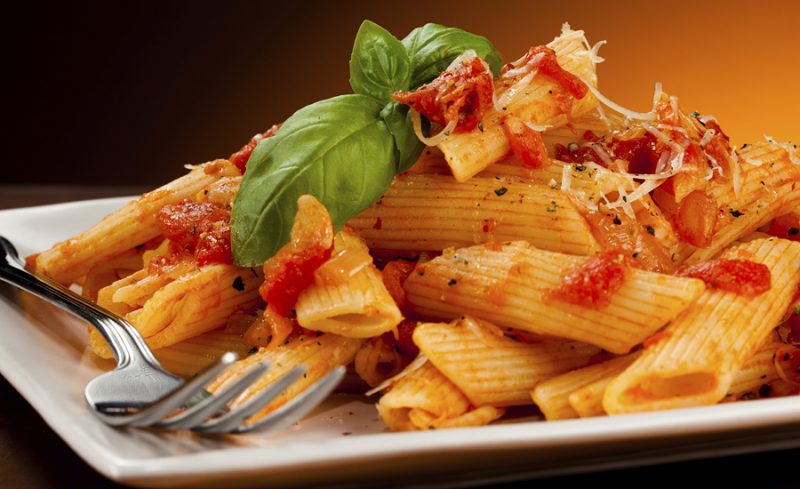Quick Answer: Pizza dough bubbles form due to yeast fermentation, which produces carbon dioxide. Factors like dough proofing time, temperature, and dough handling affect bubble formation.
The Science Behind Pizza Dough Bubbles
Pizza night at home always brings a sense of excitement. As an avid food and recipe blogger, I’ve explored countless pizza dough recipes and techniques over the years. But if there’s one thing that’s puzzled me and my fellow pizza aficionados, it’s those enigmatic pizza dough bubbles. You know the ones – those airy pockets that form, seemingly at will, while your pizza bakes to perfection in the oven. Ever wonder why your dough does that? Well, I’m here to unravel the science behind pizza dough bubbles and share some pro tips to keep them in check.
Understanding Yeast Fermentation
At the heart of every pizza dough recipe is yeast. It’s the magical ingredient responsible for that delightful rise and the bubbles we adore. When I began my pizza-making journey, I was fascinated by the science of yeast fermentation. Yeast is a living organism, and when we provide it with warmth, moisture, and a little food (sugar), it becomes a powerhouse of carbon dioxide production. This gas gets trapped in the dough, causing it to inflate like a balloon. So, you can see why understanding yeast’s role is key to comprehending pizza dough bubbles.
Role of Carbon Dioxide in Dough Expansion
Yeast works its magic by converting the sugars in the dough into alcohol and carbon dioxide. It’s the latter gas that’s of particular interest to us. As the yeast cells feast on sugar, they release carbon dioxide, creating tiny bubbles throughout the dough. These bubbles expand as more gas is produced, ultimately giving the dough its rise and that classic, puffy texture. But sometimes, this process can go into overdrive, resulting in excessively large bubbles.
How Temperature Affects Dough Rising
Temperature plays a crucial role in the rate of yeast fermentation and dough rising. In my early days of pizza making, I learned the hard way that the ambient temperature can make or break your dough. Warmer temperatures accelerate yeast activity, leading to faster fermentation and potentially larger bubbles. On the other hand, cooler temperatures slow down the process, allowing you more control over bubble formation.
So, what happens when you leave your pizza dough in a warm spot to rise, and it balloons into enormous bubbles? Or when you use cooler proofing conditions and end up with a denser crust? Don’t worry; we’ll get to that in the following sections. We’ll also dive into some of the common reasons for those intriguing pizza dough bubbles and how to keep them in check.
Common Reasons for Pizza Dough Bubbles
Let’s explore some of the common culprits behind those elusive pizza dough bubbles. Understanding these factors will empower you to create the perfect pizza crust every time.
Overproofing the Dough
One of the most common reasons for excessive pizza dough bubbles is overproofing. In my early pizza-making days, I once left my dough to rise for far too long. The result? A crust that looked more like a lunar landscape than a canvas for toppings. Overproofing occurs when the dough ferments for an extended period, allowing the yeast to produce an excessive amount of carbon dioxide.
Dough Stretching Techniques
Stretching and shaping pizza dough are essential skills for any pizza enthusiast. It’s a fun process that lets you get hands-on with your pizza. However, if not done correctly, it can lead to unwanted bubbles. But don’t worry; I’ll share some tips on the right way to stretch your dough to achieve a perfect crust.
Air Trapped in the Dough
Another reason for pizza dough bubbles is trapped air. This can happen when you don’t knead your dough properly, leaving pockets of air within the dough. When these pockets heat up in the oven, they expand, creating bubbles on the surface of your crust.
Tips for Preventing Pizza Dough Bubbles
Now that we’ve uncovered the mysteries behind pizza dough bubbles, let’s delve into some expert tips that will help you achieve that perfect, bubble-free pizza crust.
Proper Dough Proofing Methods
I remember early on in my pizza-making journey, I was a bit impatient when it came to dough proofing. I wanted my pizza right away, but rushing the process can lead to unwanted bubbles. Proper dough proofing involves allowing the dough to rest and rise for just the right amount of time. You’ll want to follow your recipe’s recommendations closely, considering factors like room temperature and the type of yeast used. This ensures controlled fermentation, preventing excessive bubble formation.
Stretching and Handling Dough
Mastering the art of stretching and handling pizza dough is a skill every pizza enthusiast should acquire. It not only ensures an even crust but also helps prevent bubbles. When I was honing my pizza-making skills, I learned that stretching the dough evenly and gently is key. Avoid aggressive stretching, which can force air out of the dough and lead to bubbles. Instead, use your fingertips and work from the center outward to maintain an even thickness.
Docking and Pricking Dough
Docking your pizza dough may sound a bit technical, but it’s a simple technique that can save you from unexpected bubbles. In my early days, I had my fair share of bubbly mishaps, until I discovered docking. This involves lightly poking the dough’s surface with a fork or a specialized tool. By creating small perforations, you allow air to escape during baking, reducing the chances of bubble formation.
Types of Crusts and Their Bubble Characteristics
Pizza crust comes in a variety of styles, each with its unique characteristics when it comes to bubbles. Let’s explore a few common types:
Thin Crust vs. Thick Crust
Thin crust pizzas tend to have fewer bubbles due to the thin layer of dough. On the other hand, thick crust pizzas, like deep-dish or pan pizzas, are more likely to have a thicker layer of dough and may exhibit larger bubbles.
Neapolitan vs. New York-Style Crust
Neapolitan pizzas, known for their thin and slightly chewy crusts, often have a few, small, and beautifully blistered bubbles. In contrast, New York-style pizzas have a thin but pliable crust, with fewer bubbles, creating a more uniform surface.
Creative Uses for Pizza Dough Bubbles
Believe it or not, those pesky bubbles can also be put to good use. Let me share some creative ideas for incorporating bubbles into your pizza creations:
Stuffed Crust Variations
Leverage pizza dough bubbles by creating a stuffed crust pizza. As the dough rises, those bubbles can be filled with cheese, creating a delightful cheesy surprise at the edge of your pizza.
Focaccia and Bubble-Top Pizza
For a different twist, you can use the dough’s natural bubbles to make a delightful focaccia or a bubble-top pizza. These recipes intentionally celebrate the texture and flavor that bubbles bring to the table.
Troubleshooting Dough Bubbles
While understanding how to prevent pizza dough bubbles is crucial, it’s equally important to know how to troubleshoot them when they unexpectedly pop up. Here are some valuable tips for dealing with dough bubbles:
Dealing with Excessive Bubbles
Sometimes, despite your best efforts, you might still end up with excessive bubbles. It happens to the best of us. If your pizza dough looks more like a bubble wrap than a canvas for toppings, don’t fret. You can salvage your pizza. Gently press down on the bubbles with a fork to deflate them. Continue baking, and your pizza will still taste fantastic.
Deflating Overinflated Bubbles
Should you encounter a gigantic bubble during baking, don’t panic. It’s happened to me too. Carefully puncture it with a fork or knife to release the trapped air. Afterward, press down gently to spread the dough evenly. Your pizza will still be delicious, and no one will notice the minor hiccup.
Conclusion: Perfecting Your Pizza Dough
In the world of pizza making, dough bubbles are just another delightful challenge to conquer. With a bit of knowledge and practice, you can create the perfect pizza crust every time. The science of yeast fermentation and the art of dough handling are at your fingertips. Whether you prefer a thin, crispy crust or a bubbly Neapolitan delight, you now have the tools to achieve your pizza dreams.
Frequently Asked Questions (FAQs)
What’s the ideal dough proofing time for bubble control?
The ideal dough proofing time depends on factors like room temperature and yeast type. Following your recipe’s recommendations helps control bubbles.
How do I get a crispy crust without excessive bubbles?
Achieving a crispy crust involves even dough stretching and avoiding overproofing, which can lead to excessive bubbles.
Can I prevent bubbles in my pizza dough?
Yes, you can prevent excessive bubbles by following proper dough proofing, stretching, and docking techniques.
Can I use whole wheat flour for pizza dough to control bubbles?
Yes, whole wheat flour can be used, but it may require adjustments to your recipe for ideal bubble control.
How does gluten development affect pizza dough bubbles?
Proper gluten development is crucial for dough structure and controlling bubbles. Underdeveloped gluten may lead to excessive bubbling.
What’s the best way to store pizza dough to prevent excessive bubbling?
Storing pizza dough in an airtight container in the refrigerator helps maintain ideal conditions for bubble control.
Does the choice of toppings affect bubble formation in pizza dough?
While toppings don’t directly affect bubbles, a balanced distribution, and even dough thickness can help control bubble formation.
Are there any gluten-free alternatives for bubble-free pizza dough?
Yes, gluten-free flours can be used with appropriate adjustments to create gluten-free pizza dough with controlled bubbles.
Can the type of oven or pizza stone affect dough bubbles?
Yes, the type of oven and pizza stone can influence baking conditions, which, in turn, may affect bubble formation in pizza dough.
What role does humidity play in dough fermentation and bubble formation?
Humidity can affect the rate of dough fermentation. Higher humidity may lead to faster fermentation and potentially more bubbles.
Are there regional variations in pizza dough that lead to different bubble characteristics?
Yes, regional pizza styles can have variations in dough that result in different bubble characteristics, such as thin-crust Neapolitan or thick-crust Chicago-style pizza.
How does using a sourdough starter affect bubble formation in pizza dough?
Sourdough starters can create unique flavors and textures in pizza dough, with fermentation contributing to bubble formation.
What are some quick fixes if I notice bubbles forming during baking?
To address unexpected bubbles during baking, gently puncture them with a fork to release trapped air and press down for an even crust surface.


